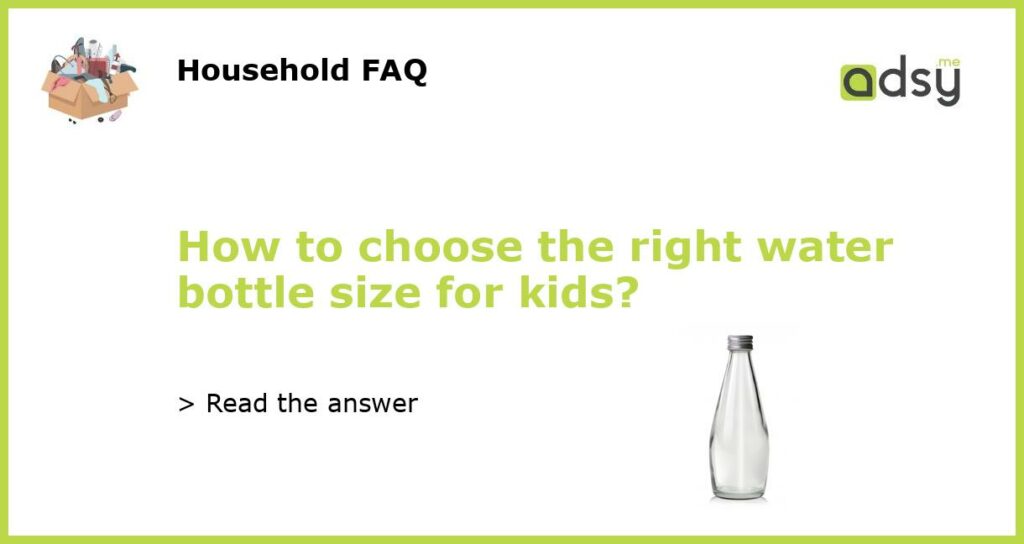Understanding the Importance of Choosing the Right Water Bottle Size for Kids
Keeping your child hydrated is important, especially during physical activities or hot weather conditions. Water bottles are no longer a luxury, they are a necessity for children to carry to school, outdoor sports, and other events. While choosing a water bottle, size is an important factor to consider. Proper hydration not only helps in overall health benefits but also boosts the immune system and helps the body stay cool. In this article, we will help you understand how to choose the right water bottle size for kids.
Consider Your Child’s Age and Weight
Age and weight play a critical role in determining the size of the water bottle for your child. Younger children may have difficulty carrying a heavier and larger bottle, whereas older children and teenagers can carry more substantial water bottles that come with extra features such as insulation, straw attachment, or filters. A general calculation is to provide eight ounces of water per 20 pounds of weight. For example, a 40-pound child would require a 16-ounce water bottle, while an 80-pound child would require a 32-ounce bottle.
Think About the Purpose of the Water Bottle
Another essential factor is to consider the purpose of the water bottle. Will your child be using it for sporting events? Is it for use during school time? Understanding the purpose can help you decide the size of the water bottle. For instance, if your child needs water for sports, there are larger bottles with straws and nozzles that can help them drink water while in motion. If it’s for school, a smaller, lightweight water bottle with a spill-proof cap is recommended.
Consider the Type of Water Bottle Material
When choosing a water bottle for your child, material plays a vital role. There are various types of water bottle materials, including plastic, stainless steel, aluminum, and glass. Plastic water bottles are lightweight and durable, making them ideal for younger children. Stainless steel is less likely to retain flavors and odors, and aluminum bottles are lightweight and durable. Glass water bottles are non-toxic and keep water tasting fresher when compared to plastic. The material can influence the size and weight of the water bottle.
Check for Space and Carrying Options
The size of the water bottle also depends on the space that it will occupy while carrying. A bulky water bottle may be challenging to fit in a backpack or lunchbox. A slim, compact water bottle that fits easily in the bag is ideal for school children. Additionally, consider carrying options such as a handle or a carrying strap, which may come in handy when carrying the water bottle on hikes or walks.
Choosing the right water bottle size for kids is crucial as it affects their overall health, hydration, and well-being. Consider your child’s age and weight, the purpose of the water bottle, material, and space requirements. With these factors in mind, you can make an informed decision and choose a water bottle that will keep your child hydrated and healthy, wherever they go.






